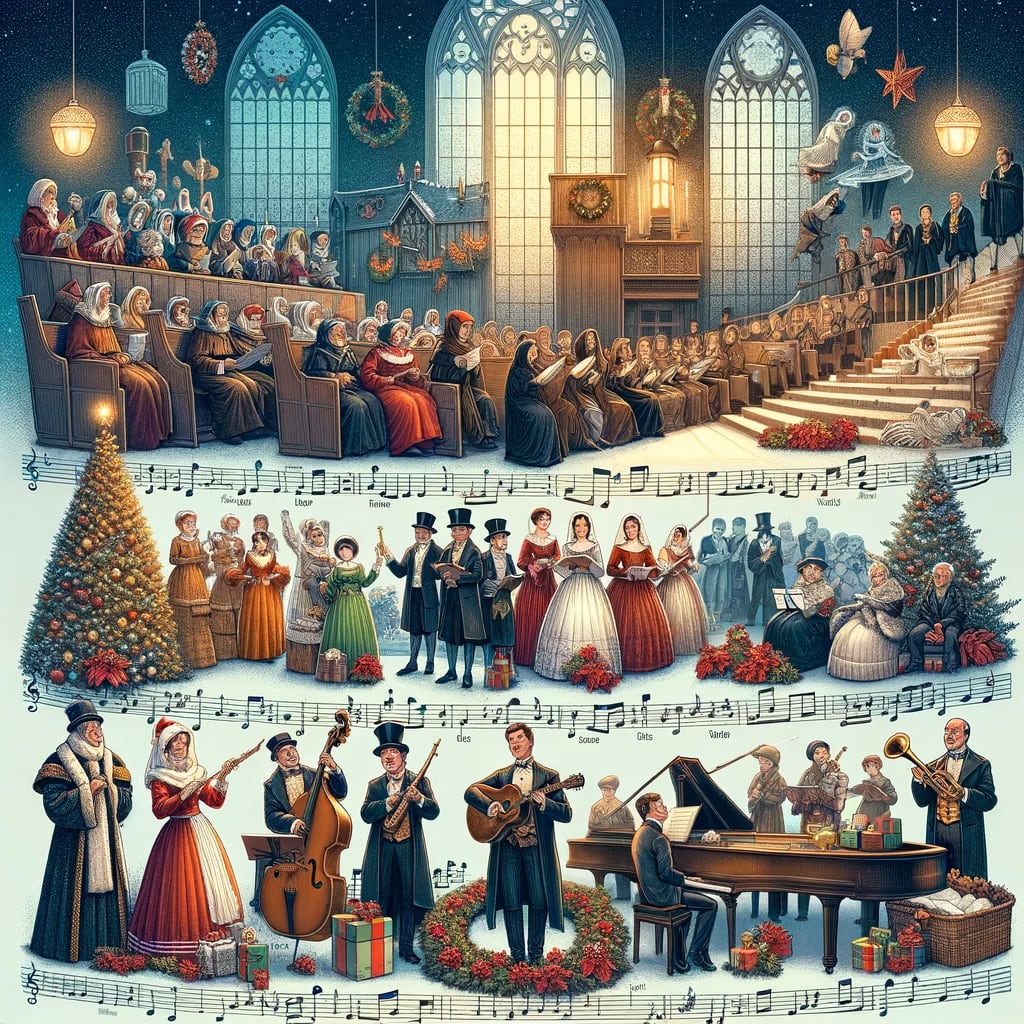The Evolution of Christmas Carols
From Medieval Hymns to Modern Classics

Christmas carols, with their melodious charm and festive spirit, have long been a staple of the holiday season. These songs, ranging from solemn hymns to joyful tunes, have evolved significantly over the centuries. From their origins in medieval Europe to their contemporary renditions, Christmas carols have provided the soundtrack to our holiday celebrations. They have also reflected cultural and historical changes in Christmas observation. Sing along with me as we trace Christmas carol history from ancient chapels to modern concert halls. We will see how they have become an essential part of the holiday season.
The Birth of the Christmas Carol
The origins of Christmas carols can be traced back to medieval Europe, where they began as liturgical songs sung during church services. These early carols were solemn and primarily in Latin, reflecting the religious nature of the period. However, over time, the carols began to take on a more festive character, with the addition of music and lyrics in vernacular languages. This shift made them more accessible to the common people, allowing everyone to participate in the celebration of Christmas. The medieval carols were often based on biblical narratives, weaving the stories of Christ's birth into song, and were performed by wandering minstrels who traveled from town to town.
The Flourishing of Caroling
During the Renaissance and Baroque periods, Christmas carols flourished. The era's focus on artistic and cultural expression breathed new life into these songs, with composers creating more elaborate and harmonious arrangements. The carols of this period began to feature more diverse themes, including winter landscapes, the joys of the season, and even secular subjects. Churches and communities would come together to sing these carols, making them a central part of Christmas festivities. This period also saw the rise of printed carol collections, allowing the songs to spread more widely and become a more integral part of cultural tradition.
The Golden Age of Christmas Carols
The Victorian era is often regarded as the golden age of Christmas carols. It was during this time that many of the carols we know and love today were either composed or popularized. The Victorians revived and embraced the tradition of caroling, with groups of carolers going from door to door to spread Christmas cheer. This era also witnessed the incorporation of carols into Christmas plays and concerts, further cementing their role in the holiday celebrations. Classics like "Silent Night," "O Holy Night," and "Hark! The Herald Angels Sing" either originated or gained popularity during this period, becoming enduring staples of the Christmas repertoire.
Modern Interpretations and Global Influence
In the 20th century and into the present day, Christmas carols have continued to evolve, reflecting the changing times and broadening their appeal. The advent of radio, television, and the internet has allowed these songs to reach a global audience, transcending cultural and linguistic barriers. Contemporary artists have reinterpreted classic carols, infusing them with different musical styles and genres, from jazz and pop to rock and electronic. New carols have also been composed, adding to the rich tapestry of Christmas music. Today, carols are an integral part of holiday media, from movies and advertisements to special musical events, showcasing their enduring popularity and versatility.
Carols as a Symbol of Christmas Spirit
In conclusion, the journey of Christmas carols from medieval hymns to modern classics is a testament to their enduring appeal and their ability to capture the spirit of Christmas. These songs, with their rich history and evolving styles, are more than just holiday music; they are a symbol of the joy, hope, and communal spirit that define the season. As we sing these carols each year, we participate in a tradition that spans centuries, uniting us in celebration and reflection, and reminding us of the timeless wonder of Christmas.
**********************************************************************
Discover more insightful reads and expand your knowledge by exploring our related articles – each one offers a unique perspective and in-depth information on a range of fascinating topics. Click here to continue your journey of discovery!
Who Was Saint Lucy, and How Does Her Light Shine On?
The Identity of Mother Christmas
Please tell me the truth, is there a Santa Claus?
What is the Feast of St. John the Evangelist?
About the Creator
Festive Fusion Finds
My insatiable curiosity about the world we live in and passion for uncovering its history and traditions drive me to explore the world we live in. I enjoy wandering through the pages of time, exploring how our world has been shaped by them.






Comments
There are no comments for this story
Be the first to respond and start the conversation.